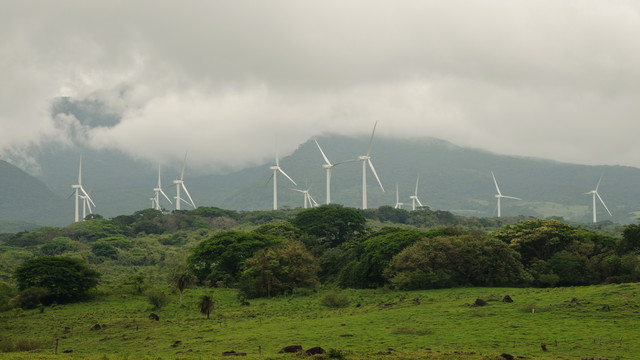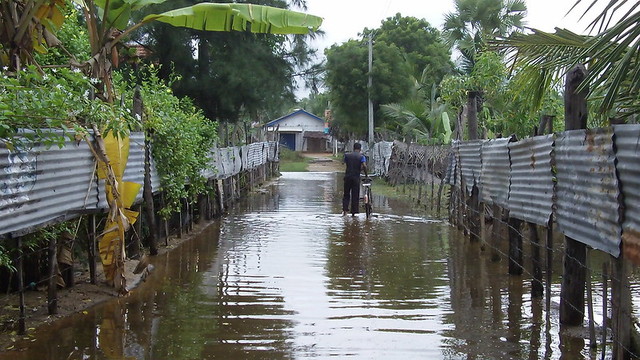Will Payments for Watershed Services fuel the protection of ecosystem services?
Metals, excess nutrients, and sediment are processed and filtered out as water moves through forests, wetlands, natural grasslands and riparian zones. It is usually easier to prevent pollution harnessing the forces of nature than to clean up the mess with costly technology. However, unchecked human activities continue to compact the soil and reduce its natural capacities. Is there a solution at hand, or is it all water under the bridge?


The river port of Vallemi. Photo Credit: Michele Molinari on Flickr
Cleaner water, steadier flows, less sediments, better capture of rainwater that prevents flash floods– these are some benefits provided by healthy ecosystems that are becoming increasingly threatened by the way land is managed.
Payments for Watershed Services
Many factors drive unsustainable land use including misaligned incentives for farmers and industries, lack of access to technology, knowledge of resources and investment capabilities.
Traditional responses have included evictions and prohibitions that lay the burden of the cost on the farmers, who are often least able to bear them. But this past decade has seen a rise of a more participative instrument, Payments for Watershed Services (PWS). Here, those who manage the land (service providers) and those who benefit from cleaner and better watershed services (service users) are brought together. “Providers” receive payments from downstream “users” (which includes local governments, the private sector and other interest groups) to invest in better management, and often representatives of both groups meet to discuss problems and solutions leading to better water governance.
Interest in the instrument is growing, but this should not distract us from questioning its usefulness. For PWS to be effective, payments or rewards must translate into a change in the farmer’s behaviour that will, ultimately, affect the provision of ecosystem services. But monitoring the performance of PWS is extremely difficult.
Going beyond simple remedies
At IIED we have been following the waves behind PWS in developing countries through the years and we have joined others highlighting the need to go beyond simple remedies based more on expectations than science (e.g. “more trees, more water”). In a recent paper, we discuss how monitoring and evaluation is used in PWS to help achieve environmental success along with lessons accumulated since our first review in 2002.
In practice, monitoring PWS tends to fall in two categories:
- Compliance monitoring: do farmers stick to the agreed contract?
- Effectiveness monitoring: is there a change in the level of the ecosystem services?
While ideally the focus should be on both, more often than not monitoring only looks at the first. Most of the schemes promote and monitor activities that affect land use (e.g. preventing conversion of existing natural vegetation or promoting soil and water conservation measures) as proxy for watershed services. No blueprint exists, but efforts are made to facilitate the use of science in the design of the instrument through toolkits (e.g. RUPES rapid assessment methodology) to get a better grasp on attribution, and on reaching payment levels that are attractive enough in relation to opportunity costs and at reasonable timings (e.g. one-offs versus continuous).
For example, in Costa Rica farmers receive a continuous cash payment for conservation through renewable contracts; in Bolivia farmers receive their payment in the form of beehives and capacity building; and in Sumberjaya Indonesia farmers get access to improved land tenure. Field-monitoring strategies include self-monitoring (where farmers have an incentive to truthfully report on their own actions, for example in BioRights), participatory monitoring (for example multistakeholder groups in Bolivia), and expert-monitoring using models and satellite imagery (mostly used in national schemes like that in Costa Rica and Mexico).
Bio Rights, promoted by Wetlands International, provides micro-credit loans to farmers to implement activities. At the end of the contract, if they deliver the agreed changes in land use they will receive a payment equivalent to the original loan (which they wouldn’t if they breech the contract).
Multi-stakeholder monitoring has been used in Los Negros, Bolivia, a relatively small scheme where representatives from the local communities, municipalities and NGOs form a voluntary commission to make field visits and recommendations. But this approach has limited success if the groups are weak, have limited options to enforce cooperative behaviour, or are faced with with free-riders.
Impact – what impact?
Monitoring the impact on watershed services is more difficult, and requires the use of baselines (often only existing for land cover, at best). Although they are common in developed countries (like Australia and the USA), measuring outcomes (i.e. water quality) is not practiced in low- and middle-income countries, mostly due to limited capacities, access to technology, and perhaps not enough demand for proof that the instrument actually works. Targeting critical areas for the production of watershed services and those that are prone to degradation (high slopes, river edges), or at greater risk from changes in land use (such as forest clearance for agriculture) is perhaps the most common tool used to increase the effectiveness of achieving positive outcomes.
The momentum behind projects that reduce carbon emissions raises the prospect of funds from the private sector and the interest in synergies between climate mitigation and watershed services. As the levering capacity to demand payments for better watershed management increases, so does the need to understand the dynamics of such activities and demonstrate their impacts. Although stakeholders believe in the principle of land management, evidence of their impact is needed to determine which initiatives genuinely add value and are worth pursuing.
Download the full IIED report: Monitoring payments for watershed services schemes in developing countries.


